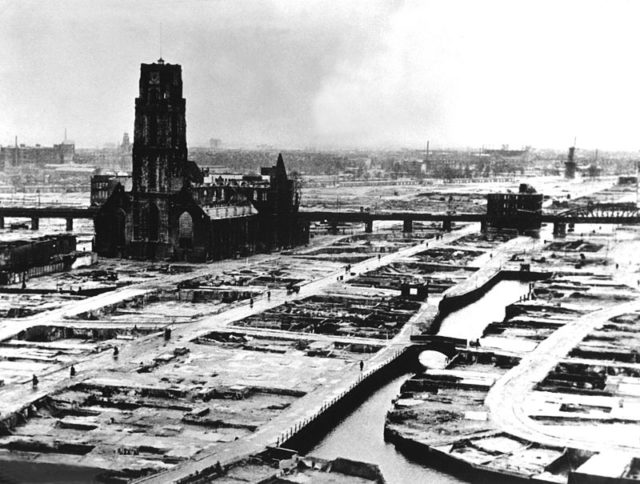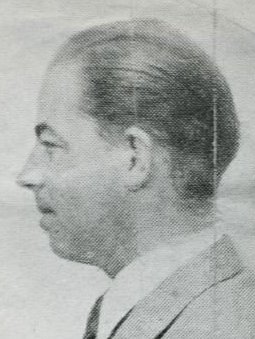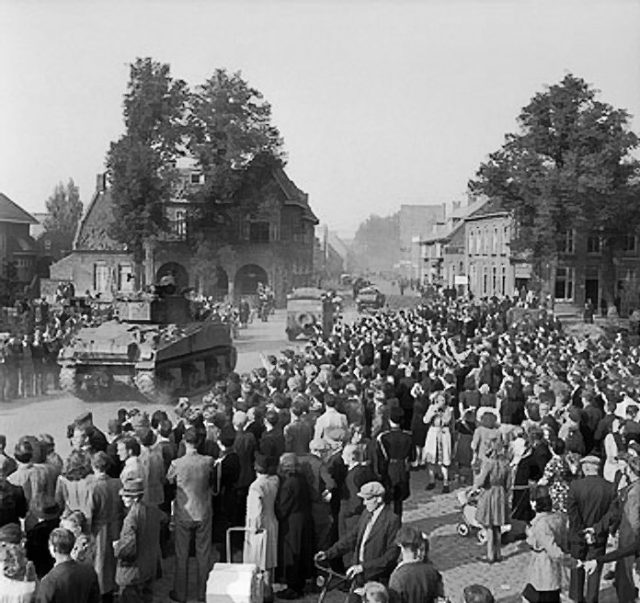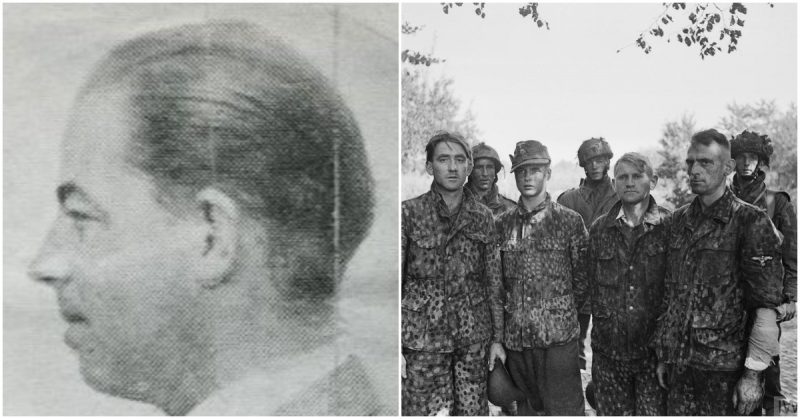At the outset of World War II the Netherlands was a neutral country. However, in May 1940, Nazi Germany conducted a military operation in which Nazi forces invaded the Netherlands. The invasion lasted only a week; the majority of the Dutch Army surrendered once they realized that their limited military forces couldn’t compete with the superior manpower and firepower of the Germans. The rest of the army followed suit after the Nazis bombed Rotterdam and threatened to bomb other Dutch cities if the remaining forces refused to surrender.
As soon as the invasion was complete, the Nazis placed the Netherlands under military occupation, which lasted until the very end of the war.

As soon as the Nazis established their military occupation, they started deporting Dutch Jews and Romani people to concentration camps. This caused the then-outlawed Communist Party of the Netherlands to organize a general strike in February 1941, during which numerous people across the country spoke out against the Nazi regime and its treatment of Jews and Romani. The strike was repressed the following day, but many people remained outraged. Although several small resistance groups existed before the February Strike, the failed movement inspired anti-Nazi groups.
Several such groups, including the Utrechtse Kindercomite, specialized in saving Jews and Romani from deportation and death, while some conducted paramilitary operation against the Nazis. One of the latter was the CS-6, a Communist resistance group founded by Gerrit Kastein and named after the address Corellistraat 6 in Amsterdam.
Kastein was a prominent neurologist and an avid Communist who spoke publicly against racism and fascism. Because of his allegiance to the Communist Party of the Netherlands, he was monitored by both the Nazis and the Dutch authorities starting in the late 1930s. However, his active career in the resistance started only after he formed the CS-6.
By the end of the war, the CS-6 had assassinated several prominent Nazi officials and members of the Dutch SS volunteer group. Kastein organized most of their operations: The group conducted thoroughly planned covert operations and usually used handguns and sniper rifles, and members of other Dutch resistance groups praised them for their stealth and efficiency.
But their successes enraged the Nazis, who organized executions of entire villages in retaliation for the assassination of their personnel by the CS-6. In March 1945, the CS-6 accidentally attacked the car of the prominent SS General and Chief of Nazi Police Hanns Albin Rauter, who was wounded in the attack. Rauter responded to the attack by ordering the execution of 116 men from the village of Woeste Hoeve and another 147 prisoners.

The Nazis tried to apprehend Kastein many times, but he eluded capture until February 1943. On February 19, 1943, Kastein set out to meet Piet Wapperom, a fellow member of the CS-6, in Utrecht. However, Kastein didn’t know that Nazis agents in Utrecht had arrested Wapperom several days earlier. They searched his notebooks and found that he was about to meet Kastein; they forced him to attend the meeting under their supervision and they even stuck a broomstick down his trousers so that he couldn’t escape.
Kastein was arrested after a brief struggle with the Nazi agents. When he was taken to the car which was supposed to take him to a prison outside Utrecht, he pulled a concealed weapon out of his coat and shot the agent driving the car. He then managed to escape but was recaptured almost immediately. Although he pulled out another concealed weapon, this time from his trousers, the Nazi agents subdued him.

Kastein was taken to a prison outside Utrecht, where he was tied to a chair and placed in an interrogation room on the second floor of the main building. He knew that the Nazi interrogators were prepared to use torture to extract from him information on the activities of the CS-6, so he decided to prevent any betrayal of his comrades by committing suicide. Since he was tied to a chair and locked in an interrogation room, suicide was a difficult task.
Read another story from us: Walter Benjamin committed suicide in fear of being captured by the Nazis
However, Kastein managed to stand up and throw himself out of the window of the room while still being attached to the chair. His skull was severely fractured from the fall, and although the Nazis attempted to save his life so they could interrogate him, he died several hours later. The identities of the members of the CS-6 remained a secret.
